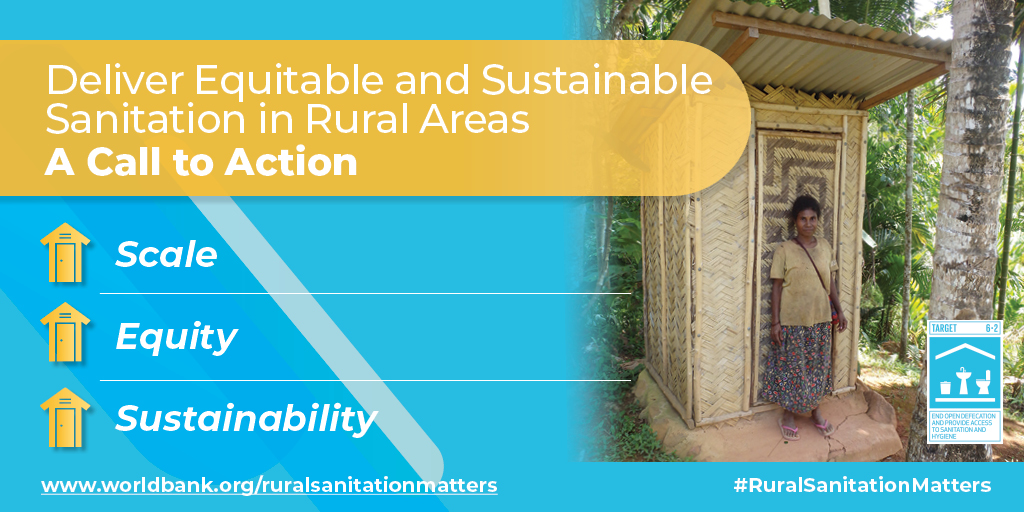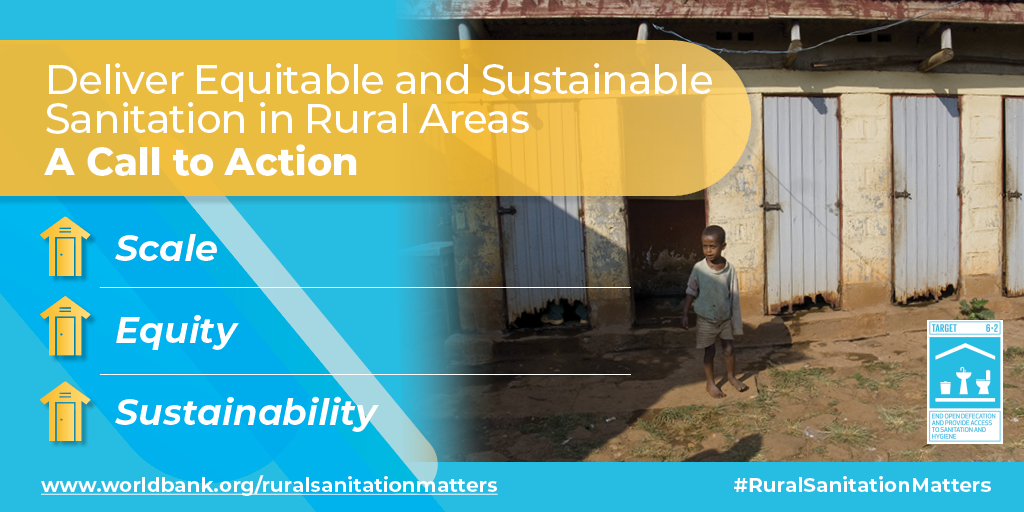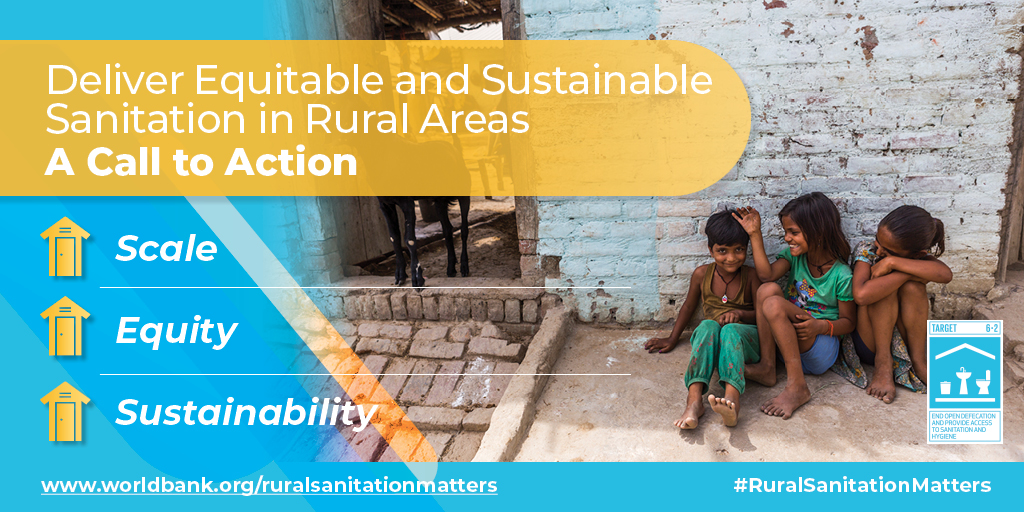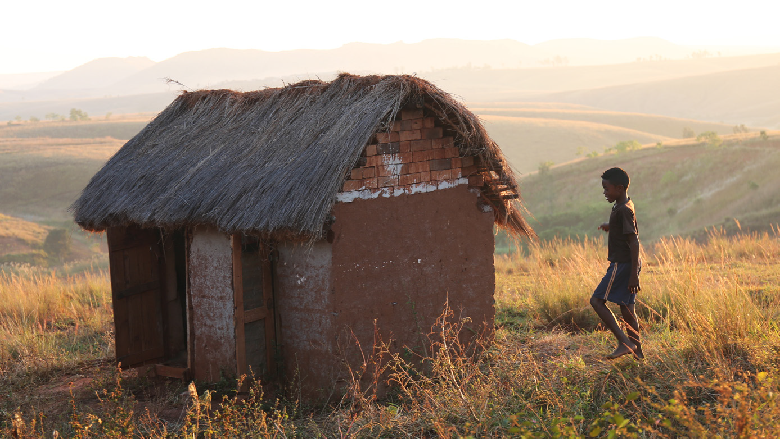Globally, two billion people lack basic sanitation services and among them, 673 million still practice open defecation. The sanitation crisis is most acute in rural areas, home to 91 percent of the people who defecate in the open and 72 percent of those without basic sanitation. Women and girls are disproportionally impacted by lack of access.
What are the barriers to achieving equitable and sustainable sanitation in rural areas?
First, many governments struggle to prioritize rural sanitation in the national agenda and make progressive financial commitments. In 2017, 90 percent of all countries reported insufficient financing to meet national targets for rural sanitation, and 73 percent had no financing plan that was consistently followed. Second, poor results from prior investments may be a compounding factor to sustain commitments for rural sanitation. Programs have struggled to demonstrate results at scale with quality and equitable outcomes. Third, over the past decades, while innovations such as social mobilization and behavior change approaches (e.g. Community Led Total Sanitation) have been an important step forward, they present mixed outcomes. A systematic review showed that most sanitation interventions only had a modest impact on increasing latrine coverage and use, averaging a 14 and 13 percentage point increase respectively.
To overcome these barriers, Plan International UK, SNV, UNICEF, WaterAid, the World Bank and WSSCC are calling on all stakeholders to renew their commitment to rural sanitation and hygiene and step up their ambitions and investments. The Call to Action was released on Oct. 7 at the UNC Water & Health Conference 2019, in North Carolina, United States.

To realize the right to sanitation, accelerate progress, and deliver scale with equity and sustainability, the partners call on all stakeholders to renew their commitment to rural sanitation and hygiene by stepping up their engagement using the following five principles:
1. Government leadership: Programs are led by national and local governments who display political leadership, define priorities and targets, co-invest resources, and provide administrative support, direction, and continuous oversight. These roles are critical even when governments are not the main implementing entity in a given jurisdiction. Other stakeholders follow and strengthen that leadership, while engaging in a constructive dialogue to address any gaps and build capacity.
2. Stakeholder Alignment: All stakeholders align with strategies and plans agreed at national and local levels, and work in a coordinated way. This requires facilitation through government-led coordination and cross-sectoral dialogue to build consensus and synergies.
3. Area-wide programming: To optimize health outcomes and realize everyone’s right to sanitation, programs are designed to reach all in a given jurisdiction or area, building upon the available institutional capacity and resources. Partners and national agencies work with mandated authorities for sanitation and hygiene and strengthen systems at the local level. This includes planning, human and financial resourcing, implementation and monitoring, and enabling local markets. It also means delivering sanitation and hygiene beyond the household, encompassing schools, health centers, and public spaces.
4. Inclusive solutions: Programs strive to understand which communities and individuals are at risk of being left behind and collect data in this respect. Well-informed strategies, dedicated engagement mechanisms, tailored technology options, and targeted incentives are put in place to address such inequalities.
5. Evidence-based and adaptive implementation: Programs are informed by a good understanding of the geographic, cultural, socio-economic and institutional context and the best available evidence of what works where. They adapt and combine approaches and build in frequent feedback loops to course-correct, using learning reviews and monitoring systems.

These five principles draw on and are aligned with the Sanitation and Water for All building blocks and collaborative behaviors. They specifically call on:
● Governments to state their goals for rural sanitation and hygiene, to set ambitious targets, to display political leadership from the top to the local levels, and to back this with human and financial resources; to build in multi-stakeholder review processes to tackle obstacles and learn how to reach those left behind.
● Donors to make long-term commitments for investment and support, recognizing the value of sanitation in its own right and in support of broader human capital gains and resilience; to acknowledge that one-off initiatives won’t provide equitable and sustainable results; to increase their funding and alter their modalities, allowing for longer time-frames, innovation, and a sharp focus on equitable results and systems strengthening.
● Development partners, international financial institutions, and civil society to recognize and foster government leadership, and ensure that their efforts strengthen local capacities for sustainability; to adopt the five principles, increase coordination, and tailor approaches to context, and to learn and adapt constantly.
Finally, to offer inspiration, the Call to Action also cited several case studies from around the world, illustrating different journeys to address the rural sanitation and hygiene challenge. Download the full Call to Action document to learn more.
With this Call to Action released today at the UNC Conference 2019, the six partners kicked off a series of efforts to raise awareness and make the case for renewed commitment to rural sanitation. Follow the conversation via #RuralSanitationMatters and stay tuned for the next steps!

